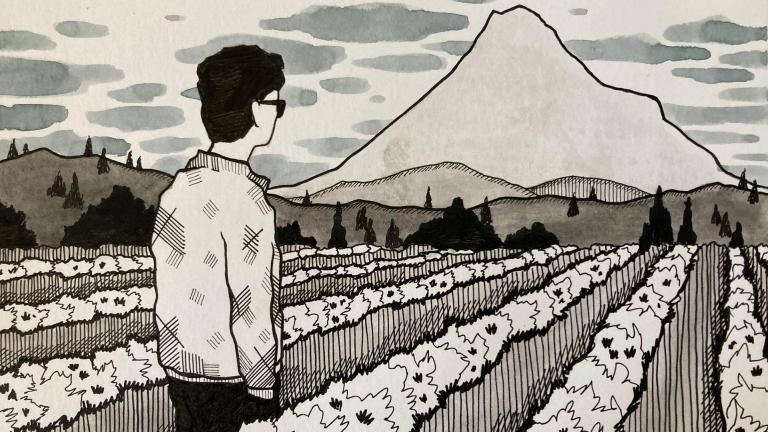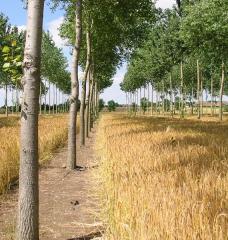
This story by ESI Journalism Fellow Alex Schwartz was originally published as part of the Project Klamath interactive website by the Herald & News, where it appears with additional photos and resources.
__________
Picture the Klamath Basin in March, as the summer of 2050 looms on the horizon. It’s been a warm, dry winter. Only specks of white remain on the mountaintops, streams languish with no snowmelt to surge their riffles and forests and grasslands already thirst for moisture. What will the experience of drought in the basin feel like if we do nothing to change the way we manage it? And what could it look like if the watershed’s stakeholders right the ship?
Plucked from a slew of possible futures, below are two scenarios the Klamath and its communities could face by the mid-21st Century. Though fictional, they are based on the impacts associated with a specific degree of warming determined by climate and economic modelers. Representative Concentration Pathways, or RCPs, are socioeconomic models that describe four different trajectories of carbon emissions, each resulting in a specific average temperature increase by the end of this century. Researchers can then use those trajectories to model the behavior of the atmosphere, assessing future impacts like extreme heat, fire danger, snowfall and more.
Both of these scenarios exist within RCP 4.5, which projects a global average temperature increase of about 3.24˚F by the end of this century relative to the period between 1986 and 2005 (for comparison, the Klamath Basin has already warmed by about 1˚F since the mid-20th century). For this to occur, global carbon emissions must peak by around 2040 and decline rapidly over the following 30 years to half of what they were in 2000.
Climate modelers consider RCP 4.5 a middle-of-the-road pathway. It emits more carbon and results in worse impacts than the best-case-scenario model that has become the goal for the 2015 Paris Agreement, but it’s not as catastrophic (or even as unlikely) as RCP 8.5, the worst-case pathway that more than doubles the increase in global temperatures by 2100.
For that to occur, humans would have to continue increasing fossil fuel use and emissions, despite market forces driving down the price of renewable energy even in the absence of robust climate policies.
In the Klamath Basin, future impacts based on RCP 4.5 and 8.5 only differ toward the end of this century, with the latter being more intense. For the purposes of imagining the Klamath Basin in 2050, both scenarios result in roughly the same outcome because previous emissions will have already locked in a certain level of warming by then.
In both of these futures, the annual average temperature of the basin will be 51.9˚F, nearly 4˚ warmer than it was in 2000. Each summer, the atmosphere will draw nearly an inch more water from plants than it used to, requiring that much more precipitation to replace it. Soils are 7% drier, and three fewer inches on average of snow-water equivalent are available to make it into streams and lakes by April 1. The average number of “extreme” fire danger days has increased by five each fire season because wildlands have become so parched.
But this isn’t a doomsday scenario — or at least it doesn’t have to be. The sparsely populated Klamath Basin can’t single-handedly reverse global emissions trends, but it can control how it responds to their related impacts. Though the first future described in “The Lone Farmer” could be considered the “bad” future, while the second described in “Lodgepole and Ponderosa” could be considered “good,” neither is any more likely than the other, and neither is set in stone.






